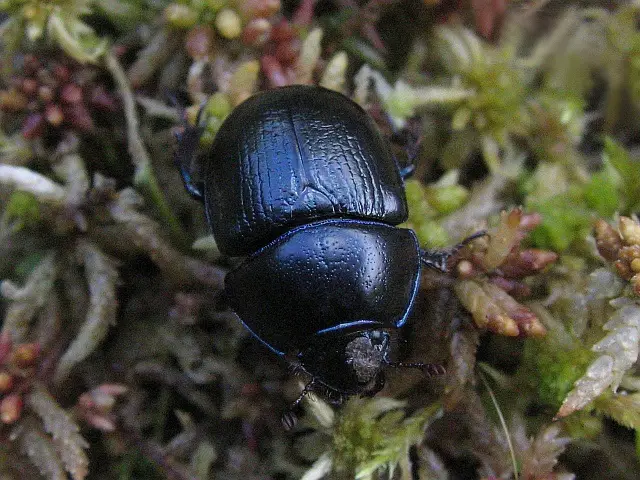Dor Beetle
The Dor Beetle feeds on organic matter, left behind by large herbivores. Without this bug, the world would have turned into a large pile of feces a long time ago. The Dor Beetle is a relative to the scarab, which Egyptians believed to be sacred and is still an icon in many Egyptian cults.
This bug species reach a size of 16-25 mm, and is very common in Central and Northern Europe, and even the territories stretching east as far as Siberia. These beetles are black, with a metallic blue or green underside. The three pairs of legs are complemented by saw-like sides, suited for digging and moving dung. The two tentacles near the mouth are used as smell sensors.
Dor Beetles live in pastures, meadows and scarcely grown forests. Obviously, they’re most common in areas with large mammals. The Dor Beetle is one of the first bugs to appear in spring, and they start working very soon. The different species of dung beetles each have their own preferred diet, and for this beetle it’s definitely horse feces. Still, it doesn’t mean the Dor Beetle would pass the excrements of a deer or a moose, or any other large herbivore.
Most animals wouldn’t be able to digest this kind of food. But, in fact, herbivores are quite lazy in regards of using their food to the fullest, and even their droppings are rich with foodstuff. For us, it might be hard to believe that an animal feeds on it, but if we look at it from another point of view, then the Dor Beetle can actually be envied, because as long as there are animals leave feces, the bug will not starve. Although the beetle prefers feces, it also sometimes eats decaying organic matter.
As all bugs, the Dor Beetles undergo four stages of development – the egg, the larva, the cocoon and then lastly imago (mature individual). At the beginning of the summer, a female beetle digs a tunnel about 60 cm deep in a dung pile with three or four compartments. An egg is laid in each of them, the tunnel is sealed and the eggs are left to develop, until next summer they finally hatch. The caterpillar feeds for about 9 months, before going into a cocoon, and after metamorphosis, it becomes a mature individual.
With their metallic shine and rather slow nature, Dor Beetles are quite easy to spot, and thus become prey to many animals. Counting the mammals and birds that feed on these bugs, it becomes clear that they’re a very important part of the food chain. If it weren’t for the Dor Beetles, the world would be a much more foul smelling place, and creatures such as hedgehogs, foxes and crows would have a much harder time finding food.




